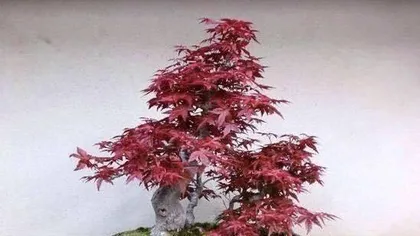Is your bonsai Japanese maple looking a bit wilted lately? Don't worry, let me give you some tips to bring your bonsai Japanese maple back to life! Caring for a bonsai Japanese maple is like taking care of a baby, it requires care and patience. Below, I will explain in detail how to care for your bonsai Japanese maple from five aspects: watering, light, pruning, fertilizing, and pest control.
I. Watering: The "Source of Life" for the Japanese Maple
Did you know that watering is a crucial step in caring for a Japanese maple? Japanese maples love a moist environment but are afraid of waterlogging. So, watering requires some skill.
1. Observe soil moisture: Before watering, touch the soil with your hand. If it feels dry, then it needs watering. But be careful not to overwater, as it can cause root rot.
2. Choose the right water source: It's best to use rainwater or filtered tap water to avoid hard water that can affect the growth of the Japanese maple.
3. Watering time: Morning and evening are good times to water. The temperature is suitable at these times, and water evaporates slowly, which is beneficial for the Japanese maple to absorb.
4. Watering method: You can use a watering can to gently spray, allowing the water to penetrate the soil evenly. Avoid watering directly on the leaves to prevent diseases.
II. Light: The "Sun Partner" for the Japanese Maple
Japanese maples love sunlight but are afraid of direct, intense sunlight. Therefore, controlling the light exposure is also very important.
1. Choose a suitable location: Place the Japanese maple on an indoor balcony or in a semi-shaded outdoor area, avoiding direct sunlight.
2. Adjust light exposure: When the sun is strong in summer, you can provide appropriate shade to prevent the leaves from getting sunburned.
3. Winter light: In winter, when sunlight is weaker, you can move the Japanese maple indoors to ensure sufficient light.
III. Pruning: The "Beautician" for the Japanese Maple
Pruning is an important part of caring for a Japanese maple. It can maintain a beautiful tree shape and promote growth.
1. Pruning time: Spring and autumn are the best times for pruning. The Japanese maple grows vigorously during these seasons, so the pruning effect is better.
2. Pruning method: Prune appropriately according to the growth condition and shape of the Japanese maple. Cut off diseased, weak, crossing, and inward-facing branches to maintain a beautiful tree shape.
3. Pruning tools: Use sharp scissors or pruning shears to avoid damaging the Japanese maple.
IV. Fertilizing: The "Nutritionist" for the Japanese MapleFertilizing can provide sufficient nutrients for the Japanese maple and promote growth.
1. Fertilizing time: Spring and autumn are the best times for fertilizing.2. Fertilizing method: Spread the fertilizer evenly on the soil surface, then gently turn it into the soil.
3. Fertilizer selection: Choose fertilizers suitable for the growth of Japanese maples, such as compound fertilizers, organic fertilizers, etc.
V. Pest and Disease Control: The "Doctor" for the Japanese MaplePests and diseases are the biggest enemies of a Japanese maple's growth and must be controlled in a timely manner.
1. Observe the leaves: Regularly check the leaves of the Japanese maple and deal with any pests or diseases promptly.
2. Control methods: You can use pesticides or biological control methods, such as spraying insecticides or releasing natural enemies.3. Preventive measures: Keep the environment well-ventilated to prevent the breeding of pests and diseases.
After all that, have you learned it? Caring for a bonsai Japanese maple is not actually difficult. As long as you care for it with heart, your bonsai Japanese maple will surely grow strong and become a beautiful sight in your home! Keep it up!